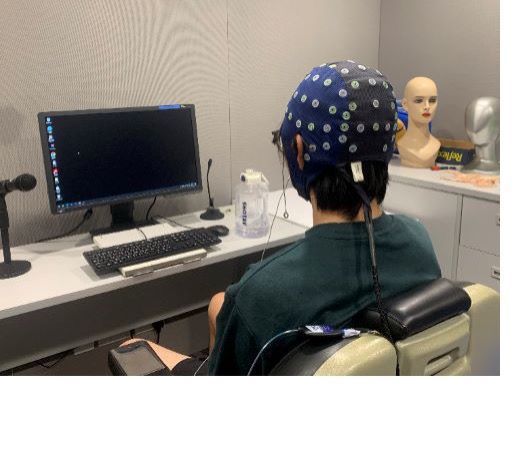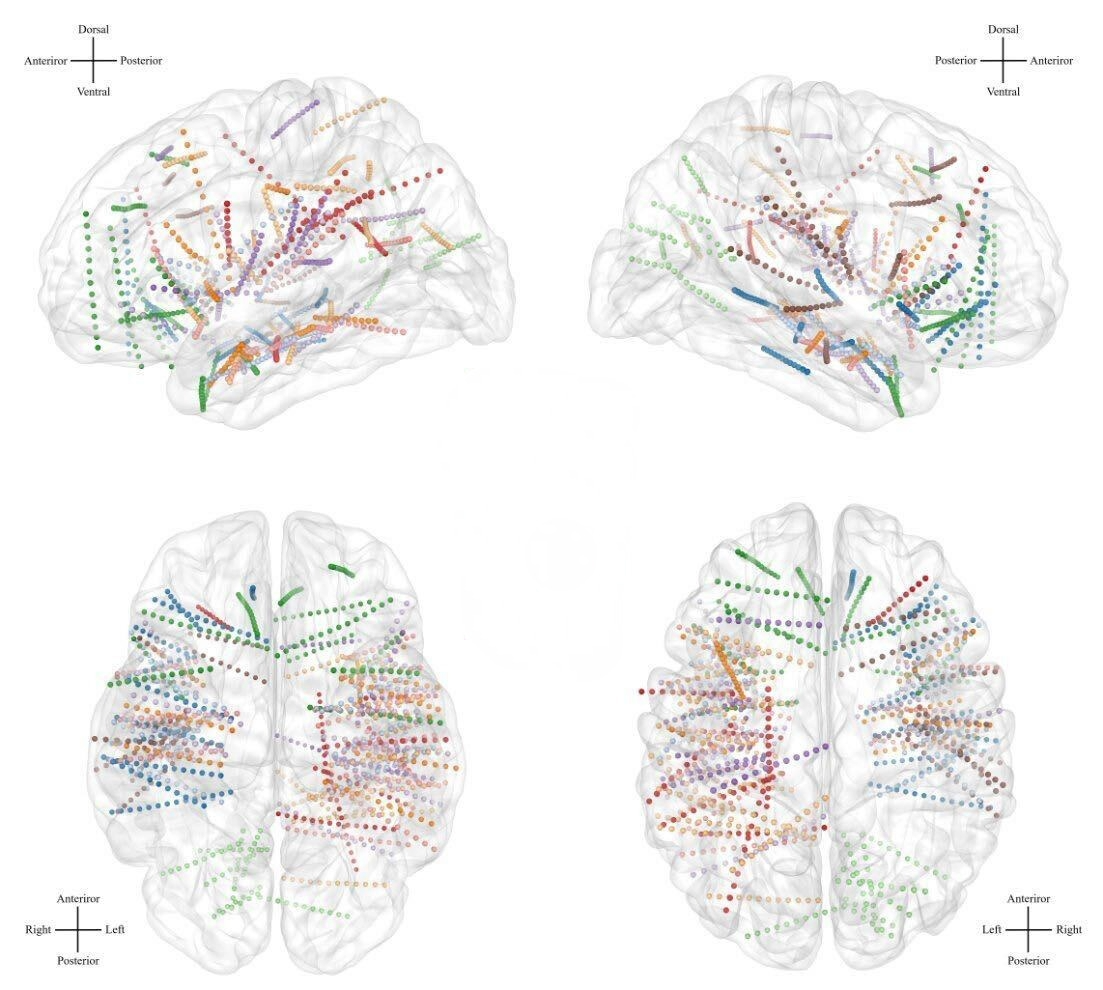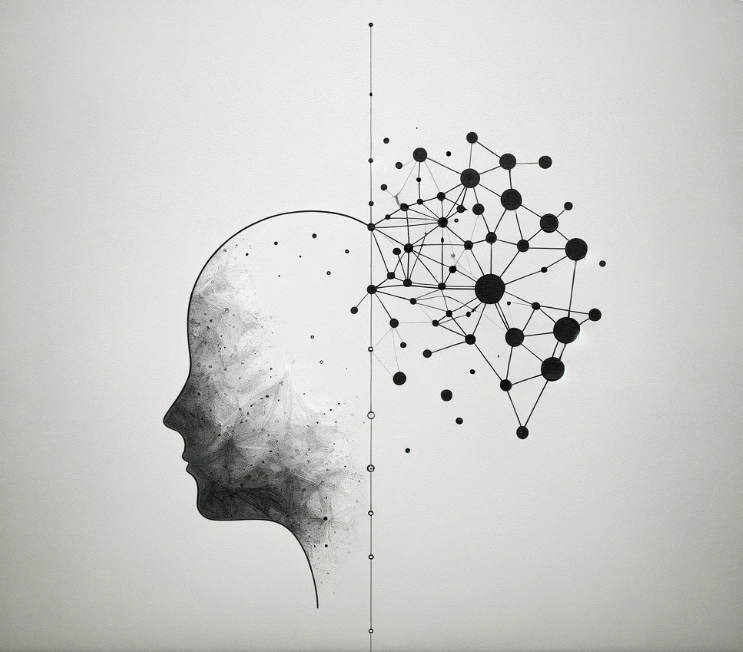Magnetoencephalography (MEG)
 Magnetoencephalography (MEG) is a sophisticated, non-invasive neuroimaging technique that measures the magnetic fields generated by neuronal activity in the brain. Due to its exceptional temporal resolution, MEG can detect and analyze rapid changes in neural signals at a millisecond scale. This makes it highly effective for investigating dynamic processes such as rhythmic perception, auditory-motor synchronization, and temporal cognitive functions. Its ability to precisely track neural oscillations across different brain regions facilitates detailed insights into the neural dynamics underlying human cognition and behavior.
Magnetoencephalography (MEG) is a sophisticated, non-invasive neuroimaging technique that measures the magnetic fields generated by neuronal activity in the brain. Due to its exceptional temporal resolution, MEG can detect and analyze rapid changes in neural signals at a millisecond scale. This makes it highly effective for investigating dynamic processes such as rhythmic perception, auditory-motor synchronization, and temporal cognitive functions. Its ability to precisely track neural oscillations across different brain regions facilitates detailed insights into the neural dynamics underlying human cognition and behavior.
Teng, X., Ma, M., Yang, J., Blohm, S., Cai, Q., & Tian, X. (2020). Constrained Structure of Ancient Chinese Poetry Facilitates Speech Content Grouping. Current Biology
Teng, X., & Poeppel, D. (2019). Theta and Gamma Bands Encode Acoustic Dynamics over Wide-ranging Timescales. Cerebral Cortex.
Teng, X., Tian, X., Doelling, K., & Poeppel, D. (2018). Theta band oscillations reflect more than entrainment: behavioral and neural evidence demonstrates an active chunking process. European Journal of Neuroscience.
Teng, X., Tian, X., Rowland, J., & Poeppel, D. (2017). Concurrent temporal channels for auditory processing: Oscillatory neural entrainment reveals segregation of function at different scales. PLoS biology.
Electroencephalogram (EEG)
 Electroencephalography (EEG) records the brain's electrical activity through electrodes placed on the scalp, providing a widely accessible method for non-invasive neural monitoring. EEG boasts high temporal precision, capturing rapid neural events and rhythmic brain responses with millisecond accuracy. This technique is particularly useful in studying cortical dynamics associated with rhythm perception, predictive timing, and cognitive processes involving attention and memory. EEG's versatility allows it to be effectively integrated into diverse experimental paradigms to elucidate how the brain processes and responds to rhythmic stimuli.
Electroencephalography (EEG) records the brain's electrical activity through electrodes placed on the scalp, providing a widely accessible method for non-invasive neural monitoring. EEG boasts high temporal precision, capturing rapid neural events and rhythmic brain responses with millisecond accuracy. This technique is particularly useful in studying cortical dynamics associated with rhythm perception, predictive timing, and cognitive processes involving attention and memory. EEG's versatility allows it to be effectively integrated into diverse experimental paradigms to elucidate how the brain processes and responds to rhythmic stimuli.
Teng, X., & Zhang, R-Y. (2021) Sequential Temporal Anticipation Characterized by Neural Power Modulation and in Recurrent Neural Network. bioRxiv.
Teng, X., Larrouy-Maestri, P., Poeppel, D. Segmenting and Predicting Musical Phrase Structure Exploits Neural Gain Modulation and Phase Precession. bioRxiv
Intracranial Electroencephalography (iEEG)
 Intracranial EEG (iEEG) involves direct recording of electrical signals from electrodes implanted within the brain, providing superior spatial and temporal resolution compared to non-invasive techniques. iEEG is particularly valuable for studying neural activity within deep brain structures and regions not accessible by surface EEG or MEG. Its detailed recordings allow researchers to examine fine-grained neural interactions, timing phenomena, and the precise coordination between cortical and subcortical areas, offering unparalleled insights into the neural mechanisms underlying complex cognitive and motor functions.
Intracranial EEG (iEEG) involves direct recording of electrical signals from electrodes implanted within the brain, providing superior spatial and temporal resolution compared to non-invasive techniques. iEEG is particularly valuable for studying neural activity within deep brain structures and regions not accessible by surface EEG or MEG. Its detailed recordings allow researchers to examine fine-grained neural interactions, timing phenomena, and the precise coordination between cortical and subcortical areas, offering unparalleled insights into the neural mechanisms underlying complex cognitive and motor functions.
Behavioral study and Neural Networks

Teng, X., & Zhang, R-Y. (2021) Sequential Temporal Anticipation Characterized by Neural Power Modulation and in Recurrent Neural Network. bioRxiv.
Teng, X., Ma, M., Yang, J., Blohm, S., Cai, Q., & Tian, X. (2020). Constrained Structure of Ancient Chinese Poetry Facilitates Speech Content Grouping. Current Biology
